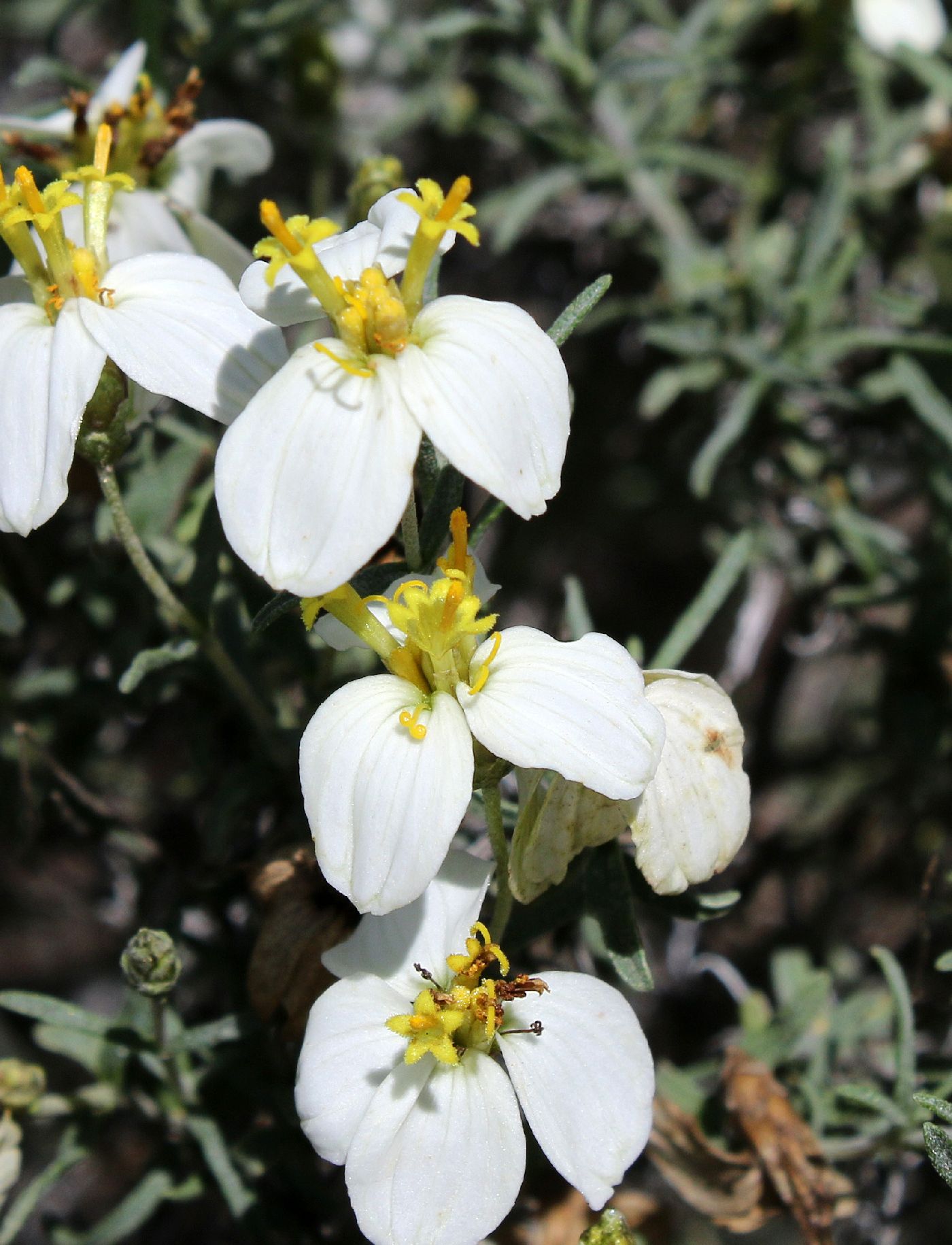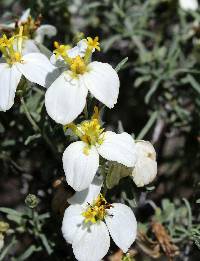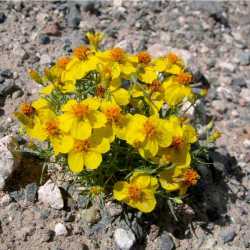Annuals or subshrubs [perennials], 10-100(-200+) cm. Stems prostrate or erect. Leaves cauline; opposite or subopposite; sessile [petiolate]; blades (1-, 3-, or 5-nerved from bases) acerose, elliptic, lance-linear, lanceolate, linear, oblong, or ovate, bases rounded to cuneate, margins entire, faces hairy (often scabrous or scabrellous), usually gland-dotted. Heads usually radiate (rarely ± discoid in Z. anomala), borne singly. Involucres campanulate, cylindric, to hemispheric or broader, 5-25 mm diam. Phyllaries persistent, 12-30+ in 3-4+ series (orbiculate to obovate or oblong, unequal, often colored or dark-banded distally, outer shorter). Receptacles conic, paleate (paleae yellowish, often reddish to purplish distally, chartaceous to scarious, conduplicate, apices rounded to acute, sometimes fimbriate). Ray florets usually 5-21 (more in 'double' cultivars, sometimes 0 in Z. anomala), pistillate, fertile; corollas yellow, orange, red, maroon, purple, or white (laminae persistent, sessile or nearly so, becoming papery, sometimes much reduced). Disc florets 20-150+, bisexual, fertile; corollas usually yellow to reddish, sometimes purple-tinged, tubes much shorter than cylindric throats, lobes 5, lance-ovate (usually unequal, usually villous or velutinous adaxially). Cypselae 3-angled (ray) or flattened (disc; not winged); pappi 0, or persistent, of 1-3(-4) awns or toothlike scales. x = 12 (11, 10).
A. M. Torres (1963) recognized subg. Diplothrix, comprising six species, including the three perennial species treated here, and subg. Zinnia, comprising 11 species, mostly annuals. This division is reflected in the first couplet of the key. Zinnia angustifolia Kunth (= Z. linearis Bentham), native to northern and western Mexico, is commonly grown as an ornamental in the United States and has been reported from Utah (S. L. Welsh et al. 1993); the record was likely from a cultivated source. The species also persists in gardens in California; it is not known outside of cultivation. It can be distinguished from other zinnias by the combination of annual habit, plants to 50 cm, leaf blades linear to narrowly elliptic (mostly 2-7 cm × 4-8 mm), involucres mostly hemispheric, usually much less than 1 cm high or wide, bright orange ray corollas (white-rayed and other color variants known in cultivation), and lobes of disc flowers glabrous or nearly so. Hybrids between Z. angustifolia and Z. violacea are known in the horticultural trade. The lack of articulation of the corolla tubes in the ray florets of Zinnia verticillata Andrews (= Z. peruviana) and the bilateral disposition of vascular bundles (continuous with vasculature of the ovary walls) in the ray florets led D. Don (1830) to conclude that true ray 'corollas' in Zinnia are lacking, being replaced instead by de novo petaloid structures that mimic ray corollas of other Compositae.










